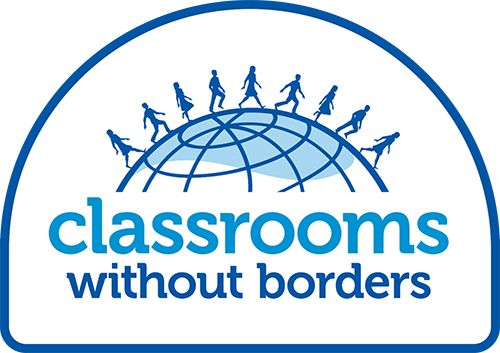After breakfast, we all gathered in the hotel’s conference room. There we met with the deputy mayor, the former deputy mayor, and a historian who works for the town. We spoke about how the citizens of the city treated Jews and what they are doing now to preserve the memory of Jewish life in the town before the war. Recently, in the square where Jews were gathered in to be deported, they put up a memorial and are working on programs for students to learn these stories. At the end of this discussion, Howard was presented with his and his family’s school records that had just recently been found. This was important for Howard because he didn’t have any records of his family from before the war.
From there, we headed to the market square. On the bus ride there, Howard pointed out the train station from where Jews were sent to concentration and extermination camps. From there, we walked to the market square. On the way there, Howard pointed out the houses and told us which family lived there and what shop they ran. In the square, we walked up to the plaque put up to honor the 4,500 Jews of Starachowice-Wierzbnik. There Howard spoke about how hard it was to get the plaque put up and about the people of the town who were murdered after the Holocaust when they returned to the town. While we were there, Howard was interviewed by the local television station.
Then we walked to Howard’s house. We stood outside as he told us about his childhood. He told us about making bread with his mom and playing soccer with the neighborhood boys and going to school. Then he spoke about how all the Jews were gathered in the square and split up. Many were sent to Treblinka but those who had work permits were allowed to stay and manufacture ammunition for the Nazis. Howard’s father lied about his age, allowing Howard to get a work permit and ultimately survive.
Next, we took the bus to the Jewish cemetery. Before the plaque was put up in the market square, the Jewish cemetery was the only reminder that there were once Jews in Starachowice-Wierzbnik. Howard explained that the only time he had been to the cemetery was for his grandfather’s funeral, four weeks before the war broke out. There was not enough time to get him a headstone. Howard knows he has family in that cemetery, but he has been unable to figure out where they were buried. We said the Mourners Kaddish, and got a chance to look at the headstones.
From there, we took the bus to Kielce. On the ride over, Howard let us ask him questions about his life. Also on the bus ride, Sherri talked about notable partisans and partisan groups in the forests during the Holocaust.
In Kielce, on the 4th of July 1946, 42 Jews who had survived the Holocaust were murdered by Poles for no reason other than that they were Jewish. We walked through the museum in the apartment block where they were murdered and saw the memorial plaques. From there, we walked to the memorial service for the victims of the pogrom. There were many speakers who talked about history, antisemitism, and the importance of memory. Then we and all the other attendees of the ceremony marched to the apartment block where the pogrom took place and the students of the town ran another small service.
After the service, we got on the bus to go to Krakow. We got there pretty late, so we checked into our rooms and went straight to dinner. For dinner, we went to an “American style” restaurant called Jeff’s. They even gave us extra drinks because it was the Fourth of July!
Emma Stewart is a student at Winchester Thurston School.
